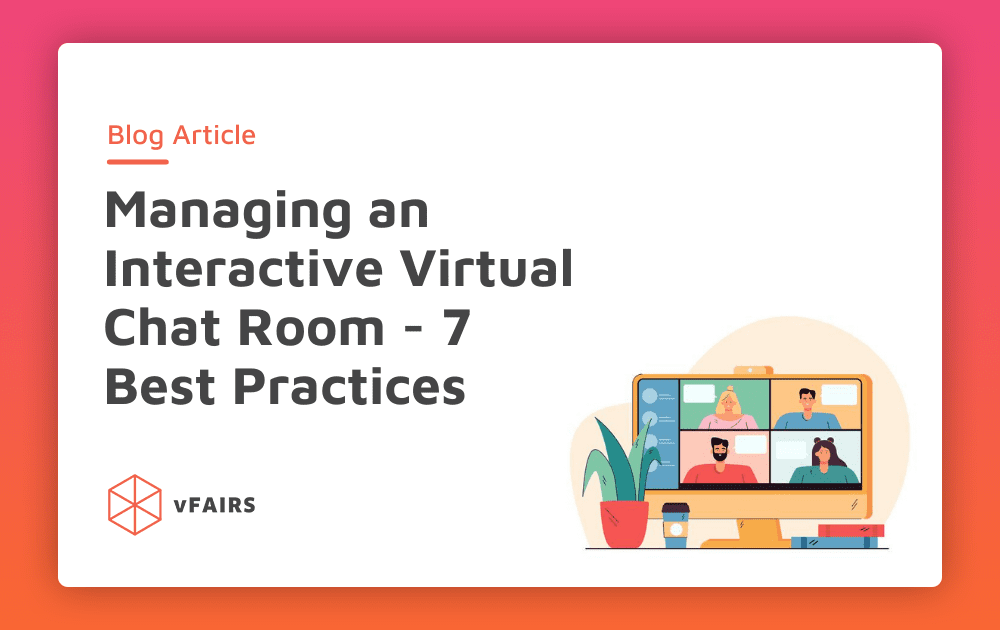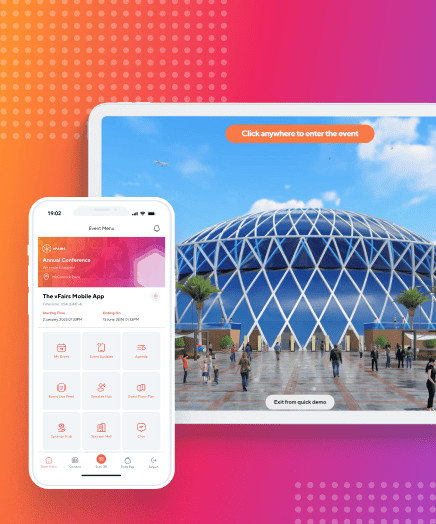As we know, the main focus of any event is networking and what’s the most crucial feature to make that happen online? You guessed it. Virtual chat rooms!
Over the years, vFairs experts have developed tips and tools to help hosts and event users connect seamlessly within virtual events. Read on for our virtual event live chat room best practices.
Why Do You Need Virtual Event Chat Rooms?
It’s a no-brainer that having a quality customer relationship is one of the key elements to a successful business. A company must maintain a positive relationship with its customers, as it’s directly reflected in word of mouth impacting brand value.
According to a survey by Techjury, 75% of the respondents stated that they prefer to have a virtual chat over any other communication channel.
Especially in a world where physical connections are almost impossible to maintain, you might wonder; how do businesses continue to sustain themselves?
Gone are the days when connections were all about emails or phone calls. Businesses are now moving toward quicker means to connect with leads before someone else does.
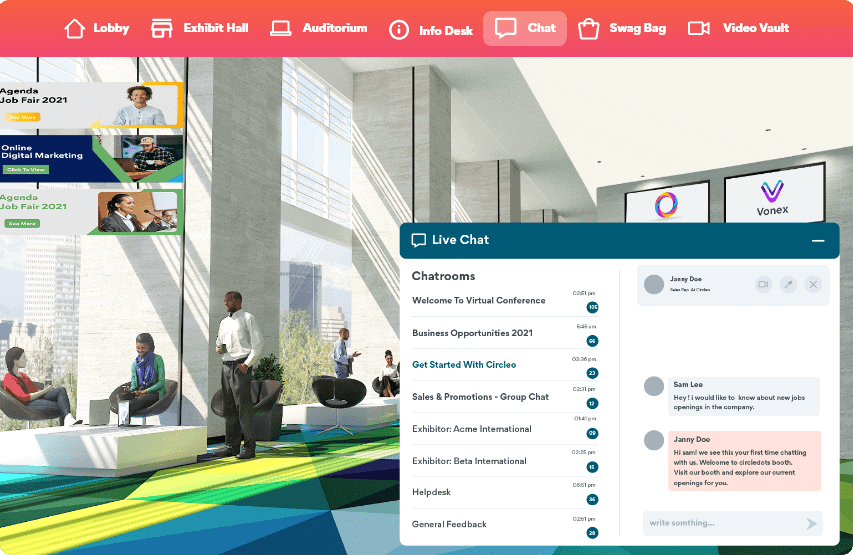
Best Practices for Managing an Interactive Virtual Event Chat Room
Now, let’s discuss some best practices for virtual event chat rooms that will help you deliver an exceptional customer experience at virtual events.
1. Offer Both Public & Private Chat Rooms
The best way to segment your virtual event chat rooms is by incorporating two types of event live chats: public and private.
Public chatroom hosting serves as an open forum where visitors can post questions and also help others in need. Messages sent in a public chat are visible to all, and anyone can easily access them for their queries.
In contrast, a private chat works for individual conversations in which a visitor typically hovers over an online user’s name and sees a button to initiate a private chat. Clicking on that opens a private chat window where you can chat with visitors. Once you are in a direct message live chatroom, the audio/video call icons are available and tapping them can initiate a call.
2. Place Your Chat in a Visible Area
Visitors are likely to drive their actions based on instincts. It’s important to place yourself in your audience’s shoes to understand what they want. The popular placement of a chat button is usually in the bottom right of the event page. However, the positioning also varies according to the visual format of your page. Just ensure that the chat feature is not too obtrusive and it does not annoy your visitors.
3. Allow for Audio and Video Chat
Integration of visual and auditory elements in your virtual event chat rooms can accelerate the scale of engagement. Given the growing demand for interactive tools that are leading companies to switch from physical events to virtual, it’s also essential to make the best use of them.
Why it is important to use audio and video options:
- Helps identify pain points faster and provide solutions in real time.
- Personalized experience can lead to improved lead conversions.
- Adds another dimension to your event, multiplying the success rate.
- Enables one-click solution to any query.
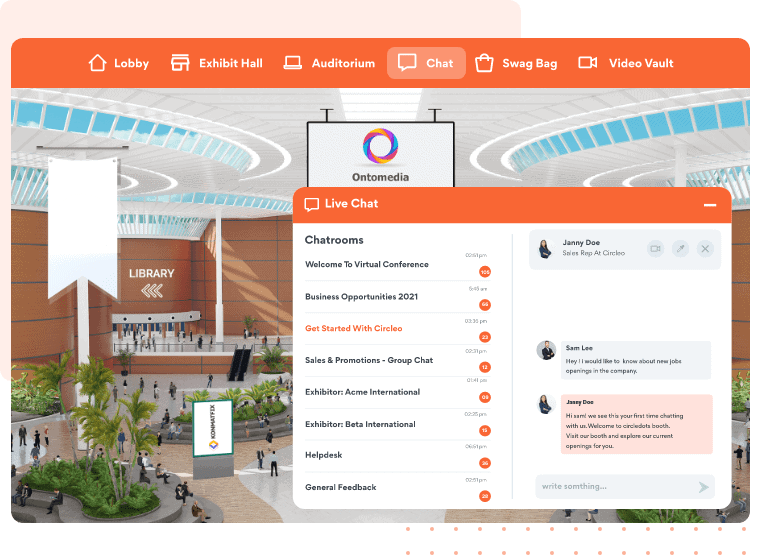
4. Collect Customer Feedback After a Chat Ends
Collecting customer feedback implies that you care about their opinion. You involve them in the decision-making process which makes them feel like an integral part of the company — resulting in a positive brand association. In a virtual event, your exhibitors can integrate a points-rating (1-5) survey at the end of every chat. This can benefit you in the following ways:
- Gauge customer satisfaction
- Improve communication in future interactions
- Build trust with attendees
5. Grant Access and Visibility to Representatives
Ensure your representatives can access attendee profiles during live events, facilitating meaningful conversations. By granting access to attendee profiles, representatives can tailor their interactions to the specific interests and needs of attendees, leading to more productive exchanges.
Moreover, representatives can add notes and tags to profiles during conversations, enhancing post-event follow-up communications and fostering long-term relationships with their leads.
6. Extract Chat Logs Post-event
Since your objective is to nurture connections, the story shouldn’t end with the event. To continue your processes, make sure your event provider allows you to extract chat logs. This offers a treasure of valuable data waiting to be used. This resource empowers hosts, exhibitors, and sponsors alike to delve deeper into conversations, extracting insights that can inform future event strategies and marketing endeavors.
Whether it’s identifying emerging trends, understanding attendee preferences, or pinpointing areas for improvement, the ability to revisit and analyze chat logs provides a strategic advantage in refining future events and maximizing impact.
7. Measure the Performance of Your Virtual Event Chat Rooms
Your event provider must generate reports that depict important data in terms of chat trends, number of chats, and so on. This is essential to track and analyze what works and what doesn’t.
You can even dive deeper into chat metrics to understand attendee engagement on a granular level. By examining which chat room topics, subjects, or types (such as private vs. public) garnered the most interaction, you gain valuable insights into attendee preferences and interests.
This comprehensive analysis is instrumental in determining what resonates with your audience and aids in strategic planning for future events. Leveraging chat metrics allows you to tailor your chat room setup and content to maximize engagement and create more impactful experiences for attendees.
8. Make Your Virtual Event Chat Rooms Fun
There are a million ways you can take your virtual event chat rooms to another level in engaging audiences successfully. Here are some:
- Prepare a list of icebreaker questions. For example: What city is on your travel bucket list? What would you be if you could be anything in the world?
- Include speed meetings. Pair people who don’t know each other for 5-10 minutes to connect and network. This is a fun and easy way to build connections.
- Contests and trivia. The host could ask questions, and participants with the most interesting answers win a prize, courtesy of the sponsors.
- Q&A with the experts. i.e. a keynote speaker or an industry influencer.
- Host a 15-minute pet party. Who wouldn’t want some time with their furry friends during the day right? Add that in and let attendees share their pet troubles as a break.
- Spice it up with a lip sync battle. After an entire day of sessions and work, attendees can be put into virtual chat rooms to have a lip sync battle.
Virtual event chat rooms are widely used for converting visitors to prospects, keeping churn rates in check, and rapidly improving response rates.
Not only are they worth diving into further, but it is also worthwhile to learn and adopt the virtual event chat room’s best practices to enhance your customer’s experience.
Our Take on Live Virtual Event Chats
Event live chat is a commonly used feature in virtual events, regardless of the type of event you’re hosting. We understand the importance of long-lasting connections and the need to interact with each other. Virtual chat for live events provides customers with a built-in text/audio/video chat experience to assist with qualifying leads.
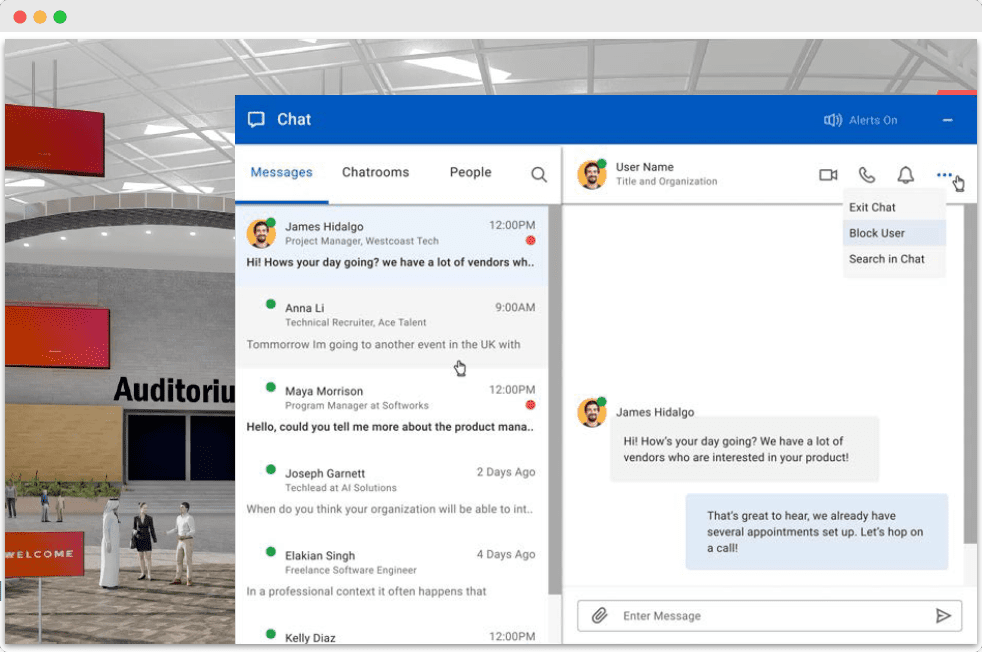
Here is a quick summary of best practices for interactive virtual event chat rooms:
- Have private and publicly accessible virtual event chat rooms.
- Place the live chatrooms or chat icons in a visible location.
- Add in video and audio chats, don’t restrict to text chats only.
- Collect feedback after your chat session.
- Collect chat logs.
- Have measurable virtual event chat rooms.
How Do You Plan A Virtual Event?
Remember to plan your virtual event articulately to avoid glitches and last-minute terrifying scenarios. Planning a virtual event begins with defining your objectives, and having your target audience mapped out.
Another critical stepping stone in planning your virtual event is choosing your virtual event provider. Follow this planning checklist for your virtual event:
- Set a clear objective – decide on a quantified objective (product promotion, sales or lead generation). Use this to drive the metrics that you plan to achieve with your virtual event.
- Know your audience – identify your target audience and base features as well as content that they will most relate with.
- Timing is everything – do your research well in advance and pick the days when all your partners, exhibitors and visitors are available (this means avoiding weekends or days with mega sports/cultural events).
- Get partners on board – Notify, brief, and train all your exhibitors and sponsors about your virtual event well in advance for them to create and provide their material.
- Promote, promote, promote – before your event, strategize your marketing channels such as social media, email lists, and official websites. Set up informative landing pages and think about how you could get people to spread the word.
- Create compelling content – It is important to deliver what visitors want. Use surveys, polls, and questionnaires to devise presentations, articles, brochures, and other collateral that represents your event.
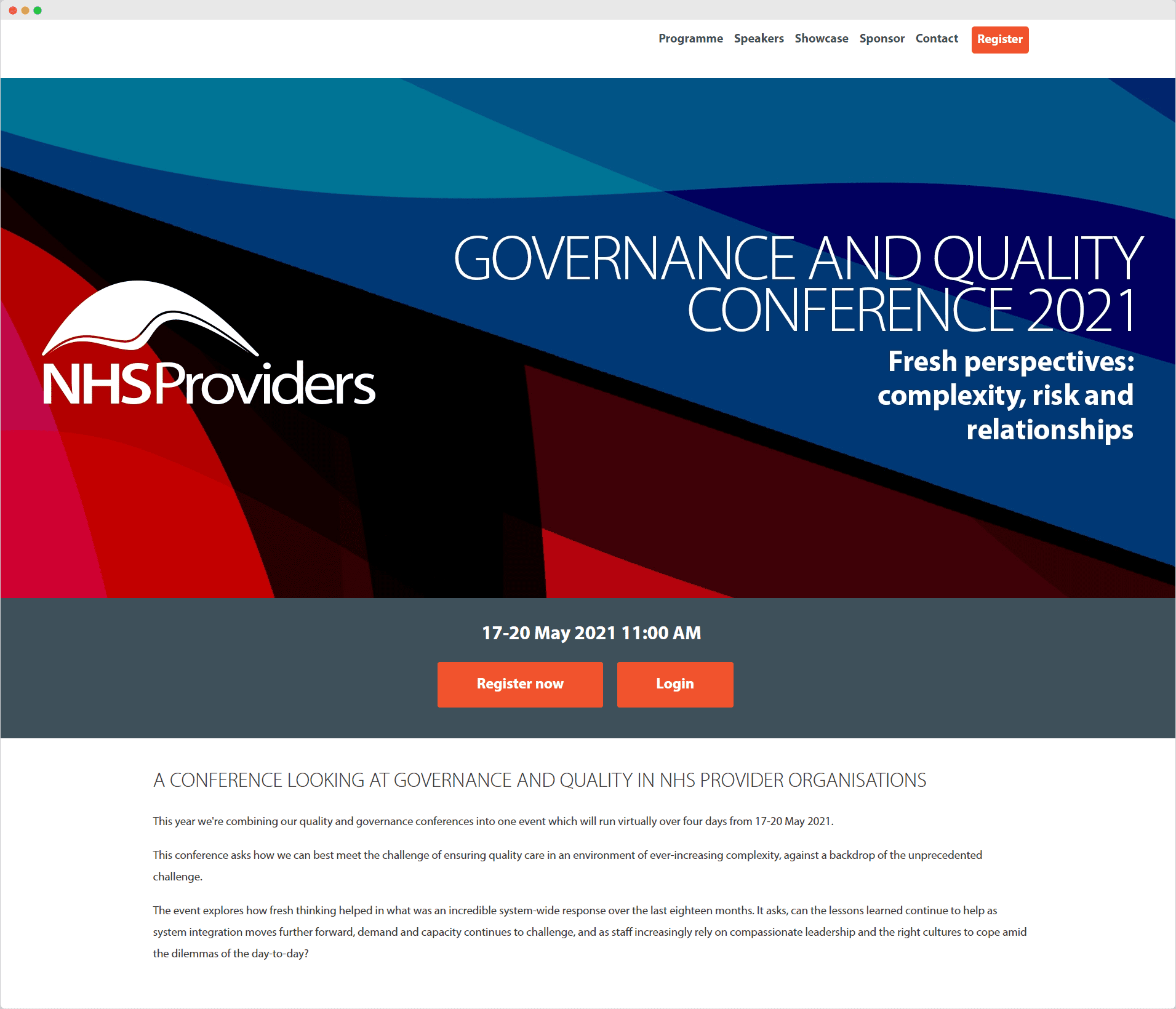
Now that you know how to plan your virtual event, the next step is to make your event interactive and compelling. An event your audience will remember you by.
For that, your virtual event has some key components that are integral to its success. These components, or rather features also help the host achieve their objectives. Organizers often want to create maximum opportunities and ease networking. This becomes a key consideration when they want to plan their virtual event. The most prominent and diverse of these features is the live virtual event chat rooms.
Use this guide to make the best out of your events with virtual chat and networking features.
FAQs
How Do You Make Virtual Events Interactive?
Virtual event chat rooms offer extensive opportunities to engage audiences including leader nurture, networking, and connection building. With modern technology drastically empowering customers with ease of information, there has been an increasing demand for live assistance, quicker resolution, and brand engagement.
Why Should You Use Virtual Chat?
Ensuring 24/7 communication with virtual chat helps you build a long-lasting connection with your customers, improve the attendee experience, catalyze the sales funnel, and improve ROI.


